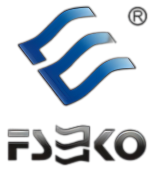Defining Digital Thermal Lamination Films
DIGITAL THERMAL LAMINATION FILMS Digital thermal lamination films are specially designed multi-layer films that when exposed to heat, will selectively bond to the printed image. This creates a tough, clear protective shield for digital graphics — protecting them from UV rays, moisture, abrasion, and solvents. Especially crucial for inkjet and laser outputs, these films boost color pop and product longevity in challenging applications such as signage and packaging.
Core Functionality: How Heat-Activated Adhesion Works
For heat activated adhesion, a softening temperature of 120-150ºC is generally sufficient to melt the adhesive layer and produce molecular bonding at the level of the substrate surface. Once material is cooled, adhesive forms a strong, permanent bond that is free of bubbles. Critical temperature control is involved in this phase transition -- overtemp causes adhesive bleed or ink distortion and undertemp will result in incomplete lamination and a low durability.
Essential Components: Film Layers and Coatings
Thermal laminating films comprise three critical strata:
- Base layer (carrier): Usually BOPP, PET, or PVC, providing tear resistance and dimensional stability
- Adhesive layer: Thermoplastic polymers (EVA, PES) activated within specific temperature ranges
- Functional coatings: UV inhibitors, anti-scratch additives, or matting agents that modify surface characteristics
These coatings resolve common challenges like ink compatibility or achieving haze-free gloss levels under humidity fluctuations.
Material Types in Thermal Lamination Films
BOPP vs. PET vs. PVC: Durability Comparison
BOPP(Bi-axially Oriented Polypropylene) is the most popular one in the globe market and possesses the best function a d most reasonable price. It is very high in Ultimate Tensile Strength and also is an economical material when the high moisture barrier is not required. • Exterior Rated – Of the films, PVC has the best quoted UV stability, so it’s especially great for car wraps, while Architectural PET (Polyester) shines in dimensional stability for rigid signs meant to last a long, long time. FESPA’s laminating film report found that polymeric PVC types perform 40% better than monomeric over outdoor life.
Adhesive Systems: Thermal vs. Cold Seal Tradeoffs
Thermal-activated adhesives require precise temperature control (120-150°C) but deliver immediate bond formation critical for gloss finishes. Cold seal alternatives eliminate heat dependency through pressure-sensitive activation, reducing energy consumption by 20% but increasing delamination risks in high-humidity environments.
Innovative Solutions: Digibond Films for Reactive Inks
Digibond films feature hybrid adhesive technology that chemically compatibilizes with solvent-based and UV-cured inks during thermal activation, eliminating common haze and orange-peel defects. These solutions reduce scrap rates up to 30% for challenging applications like metallic substrate encapsulation.
Optimizing the Thermal Lamination Process
Temperature Ranges by Film Type
Most films activate adhesives optimally between 120-150°C:
- BOPP films: 130-140°C for proper flow without shrinking
- PET films: Tolerate up to 150°C but degrade above 160°C
- Matte-finish films: Require 5-10°C lower temps to prevent optical haze
Recent glass lamination studies confirm 150°C enables bubble-free adhesion in multi-layer materials.
Speed Settings for Different Applications
| Application | Recommended Speed | Rationale |
|---|---|---|
| Vehicle wrap films | 2-3 m/min | Ensures full adhesive wet-out |
| Photo prints | 4-5 m/min | Prevents heat-induced curling |
| Textile substrates | 1.5-2 m/min | Accommodates material stretch |
Case Study: Avoiding Hazing in Matte Finishes
A manufacturer reduced haze defects by 92% through:
- Lowering operating temp from 135°C to 127°C
- Increasing nip roller pressure by 15%
- Implementing 24-hour humidity acclimation
This maintained scratch resistance while eliminating milky appearance caused by adhesive over-penetration.
Overcoming Digital Ink Compatibility Challenges
Why 30% of Lamination Failures Stem from Ink Chemistry
Chemical incompatibilities between adhesives and digital inks account for significant process failures. Waxy ink components create molecular barriers that prevent bonding during heat activation, while specific dyes react unpredictably under temperature.
UV vs. Latex Inks: Lamination Readiness
| Test Type | UV Ink Considerations | Latex Ink Performance |
|---|---|---|
| Adhesion Peel | Post-cure residues weaken bond | Water-based bonds reliably |
| Heat Exposure | May re-activate monomers | Stable at 130-145°C |
Latex formulations demonstrate superior thermal lamination compatibility due to water-based chemistry. UV inks require 72-hour curing before film application.
Industry Paradox: Higher Gloss = Lower Scratch Resistance
High-gloss thermal films show 3X faster scratch propagation compared to matte alternatives because glossy surfaces require smoother coatings with reduced additive concentrations. Manufacturers are developing hybrid nanocoatings to maintain gloss while improving hardness.
Applications Shaping Film Development
Vehicle Wraps Demanding 7+ Year Durability
Vehicle wraps require UV stability, temperature resilience (-40°C to +80°C), and abrasion resistance. Manufacturers now integrate ceramic nanoparticles and UV absorbers into adhesive layers to combat polymer degradation.
Architectural Signage and Weather Resistance
Architectural signage films feature multi-layer barriers: polyester cores for stability, acrylic coatings for chemical resistance, and hydrolysis inhibitors. Recent advancements focus on "self-healing" topcoats that minimize scratch visibility while maintaining gloss.
Best Practices for Digital Print Lamination
Critical Press Settings
- Temperature Calibration: 120-130°C for film-specific activation
- Pressure Uniformity: 1.5-2 kg/cm² across rollers
- Feed Synchronization: Match press speed to ink-drying profiles
Post-Lamination Quality Control
- Verify edge adhesion with cross-hatch tape tests
- Inspect surfaces for microbubbles under magnification
- Confirm gloss uniformity via spectrophotometry
- Assess scratch resistance via Taber abrasion cycles
FAQs on Digital Thermal Lamination Films
What are digital thermal lamination films used for?
Digital thermal lamination films are used to create a protective shield over digital graphics to protect them from UV rays, moisture, abrasion, and solvents. They are particularly useful in applications such as signage and packaging, where durability and color pop are critical.
How do digital thermal lamination films work?
These films work by using a heat-activated adhesive that bonds to the printed image when exposed to a certain temperature. This creates a strong, permanent seal that protects the image.
What is the difference between BOPP, PET, and PVC films?
BOPP films offer good tensile strength and a cost-effective option without moisture barriers. PET films are known for dimensional stability, while PVC films are excellent for UV stability and are often used in car wraps.
Why is temperature control important in lamination?
Temperature control is critical in lamination to ensure proper adhesive activation without causing defects like adhesive bleed, ink distortion, or film damage.


